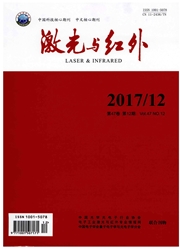

 中文摘要:
中文摘要:
利用傅里叶变换红外光谱法研究了正常烟叶和四种病害烟叶,结果显示,它们的红外光谱主要由蛋白质、脂类化合物及多糖的振动吸收谱带组成。烟叶光谱整体相似,仅在1800-750 cm^-1范围,正常烟叶和病害烟叶的光谱峰位、峰形及吸收强度比有一定差异。为了提高光谱灵敏度,对光谱进行二阶导数相关性分析,五个样品的二阶导数光谱在1750-1500 cm^-1和1200-950 cm^-1范围内的相关系数差异明显,表明五种烟叶样品所含化学成分或各成分相对含量各不相同,即病害影响烟叶的化学成分。正常烟叶的吸收强度比A1025/A1631大于1(为1.417),而其他四种病害烟叶对应的吸收强度比均小于1,表明四种病害烟叶中蛋白质所占比例增加,多糖所占比例下降。研究结果表明傅里叶变换红外光谱在鉴别病害烟叶方面具有方便、快速等优点。
 英文摘要:
英文摘要:
Fourier transform infrared spectroscopy (FTIR) was used to identify normal and four kinds of disease to- bacco leaves. The results show the infrared spectra of tobacco leaves are mainly composed of the absorption of protein, aliphatic compound and polysaccharide. Their spectra are similar. For the purpose of enhancing the spectral resolution, the second-derivative spectra were selected for evaluating the correlation coefficients, the obvious differences of the correlation coefficients were observed in two regions of 1750 -1500 cm^- 1 and 1200 -950 cm^-1, which indicates that the varieties of chemical structure and compositions among the five samples. The absorption ratio A1025/A1631 of normal tobacco leaf is greater than 1, while the corresponding ratios of disease leaves are less than 1, which suggest that the disease leaves have a lower polysaccharide content and a higher protein content than normal leaves. In conclusion, FTIR spectroscopy proved to be a successful, rapid and convenient method for the differentiation of normal and disease tobacco leaves.
 同期刊论文项目
同期刊论文项目
 同项目期刊论文
同项目期刊论文
 Calculated of Vibrational Spectral Properties of Four Protonation Forms of Histidine Using Density F
Calculated of Vibrational Spectral Properties of Four Protonation Forms of Histidine Using Density F 期刊信息
期刊信息
